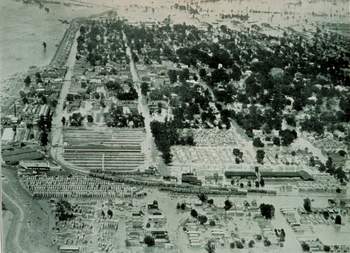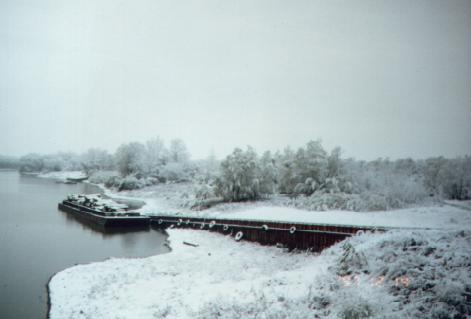The Mississippi River
'Ol' man river, that ol' man river, he must know somethin' but he don't say nothin', he just keeps rollin', just keeps rollin' along'. . .
Mississippi is an Algonquian (Native American) term meaning "big water." The river and its tributaries drains 1,150,000 square miles and is the most important river in North America. The waters begin flowing from Lake Itasca in Minnesota and empty into the Gulf of Mexico, spanning approximately 2,340 miles.
The river was formed during the ice age when the waters from melting glaciers cut large channels in the earth. The waters joined with the Ohio and Missouri rivers to make up the lower Mississippi. The river ranges in size from 12 feet wide and 1 and half feet deep to 3 to 5,000 feet wide and 9 to 12 feet deep.
'He don't plant 'tators, don't plant cotton, them that plants them is soon forgotten, but that ol' man river, he just keeps rollin' along'. . .
The
southern floodplains, in which Louisiana is included, is known as the
Mississippi Delta. The
natural flooding of the river left behind nutrient
rich alluvial soil. This soil helped Louisiana become a major agricultural
state. Crops, such as: cotton, feed grains, rice, soybeans, and corn flourished
in the Mississippi floodplains. The river also served as a means of
transportation, allowing crops to be sold and shipped over a large section of
the country. The New Orleans was the first steamboat to
successfully navigate the Mississippi river.
'You and me, we sweat and strain, bodys achin' and racked with pain, tote that barge, lift that bale, get a little drunk, gonna land in jail'. . .
The floods that brought agricultural prosperity to the Delta also brought overwhelming chaos. Thousands of acres of land have been flooded by the Mississippi River waters as they rise and fall through out the year. Northern winter snows melt and are added to the 593,000 cubic feet per second of water that flows down the river. The waters leave their banks and spread out over the adjacent lands, destroying everything in its' path. Today, the Corp of Engineers work hard to tame the river and to control the meandering waters. But, as the saying goes, give water time and it can eat away anything.
One of
the main defenses against flooding is the extensive levee systems that have been
created all along the river. Levees were first built and maintained by
individuals in an attempt to save their property from flooding, with varying
degrees of success. The levee system existed but failed in 1927 when the
worst flood in American history occurred. The Mississippi state side was
the hardest hit, particularly the town of Greenville. Thousands of dollars
in damage and many lives were swept away by the rapid river currents.
700,000 people were left homeless. The picture above was taken of the many
Vicksburg, MS, residents who became refugees until the waters receded. The flood of 1927 urged the U.S.
government to pass the Flood Control Act of 1928, which set aside $325 million
dollars for levee construction.
'I gets weary, sick of tryin', tired of livin', feared of dyin', but that ol' man river, he just keeps rollin' along'. . .
|
Bayou Teche |
 Greenville, Mississippi 1927 |
Levee
integrity is still a concern for people living in the reach of the mighty river.
Prompted by a prediction that a major flood was imminent in the late 1990's, a
project is underway to improve existing levees by making them higher and by
strengthening the base of the levee. The Corp of Engineers was also
prompted to include other defenses, such as: upstream reservoirs, meander
cutoffs, and flood outlets among others.
| A levee break during the flood of '27 |
The work is slow going but it seems
that a probable natural disaster has been avoided, so far. Oddly enough,
very few people living on the Mississippi River floodplain have flood insurance.
|
Top of the levee |
But that ol' man river, he just keeps rollin' along. . .'
|
A steamship caught in the currents collides with the levee |
A town destroyed by the raging river, 1927 |
 A rare scene in the Mississippi Delta |
Barefeet and fishing poles on top of the levee |
Two legendary paddlewheels make their way down the river
|
The Mississippi Queen |
The Delta Queen |
'Ol' Man River' was written by Broadway great Jerome Kern for the 1927 hit 'Show Boat.'